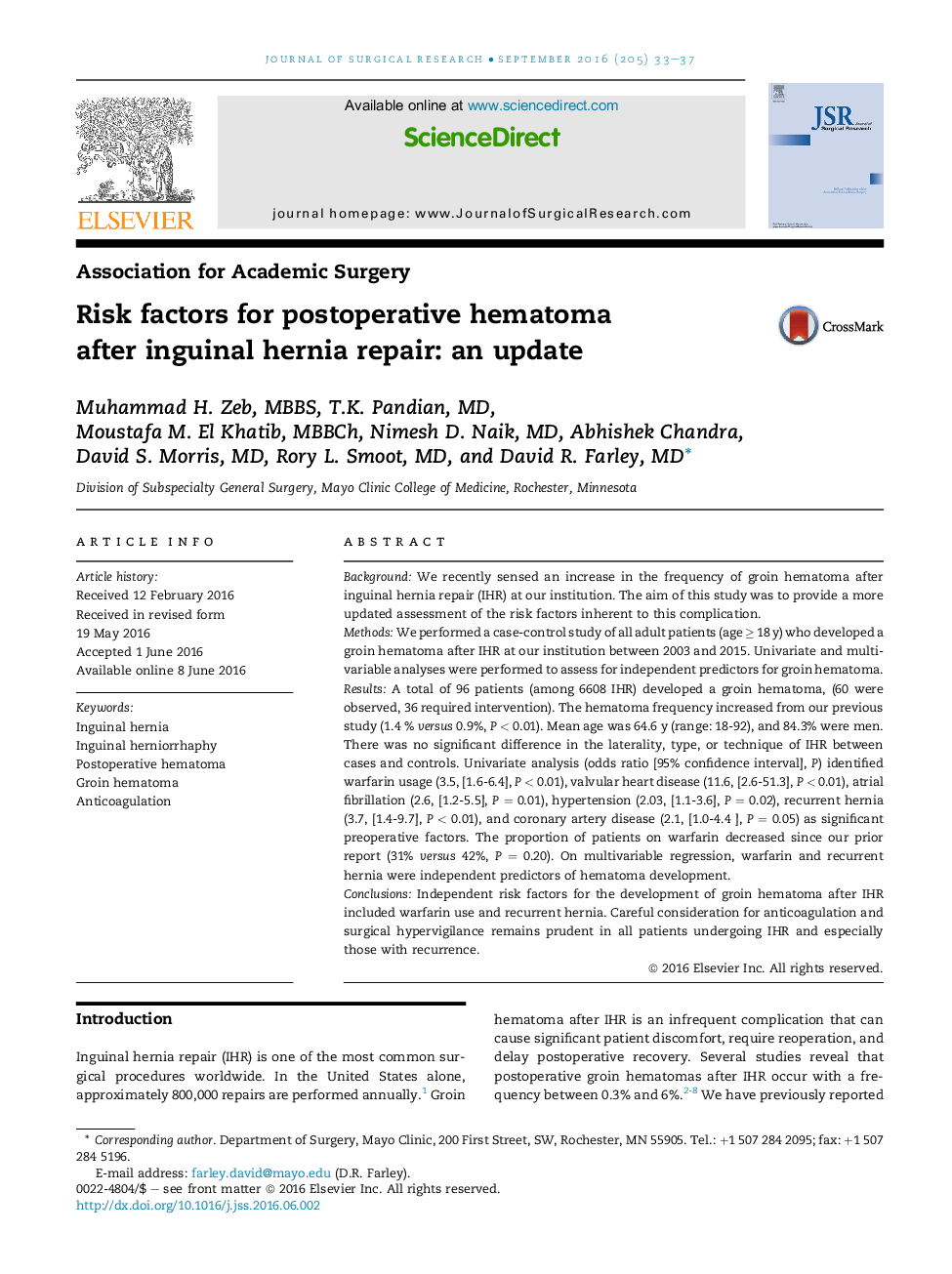| Article ID | Journal | Published Year | Pages | File Type |
|---|---|---|---|---|
| 4299313 | Journal of Surgical Research | 2016 | 5 Pages |
BackgroundWe recently sensed an increase in the frequency of groin hematoma after inguinal hernia repair (IHR) at our institution. The aim of this study was to provide a more updated assessment of the risk factors inherent to this complication.MethodsWe performed a case-control study of all adult patients (age ≥ 18 y) who developed a groin hematoma after IHR at our institution between 2003 and 2015. Univariate and multivariable analyses were performed to assess for independent predictors for groin hematoma.ResultsA total of 96 patients (among 6608 IHR) developed a groin hematoma, (60 were observed, 36 required intervention). The hematoma frequency increased from our previous study (1.4 % versus 0.9%, P < 0.01). Mean age was 64.6 y (range: 18-92), and 84.3% were men. There was no significant difference in the laterality, type, or technique of IHR between cases and controls. Univariate analysis (odds ratio [95% confidence interval], P) identified warfarin usage (3.5, [1.6-6.4], P < 0.01), valvular heart disease (11.6, [2.6-51.3], P < 0.01), atrial fibrillation (2.6, [1.2-5.5], P = 0.01), hypertension (2.03, [1.1-3.6], P = 0.02), recurrent hernia (3.7, [1.4-9.7], P < 0.01), and coronary artery disease (2.1, [1.0-4.4 ], P = 0.05) as significant preoperative factors. The proportion of patients on warfarin decreased since our prior report (31% versus 42%, P = 0.20). On multivariable regression, warfarin and recurrent hernia were independent predictors of hematoma development.ConclusionsIndependent risk factors for the development of groin hematoma after IHR included warfarin use and recurrent hernia. Careful consideration for anticoagulation and surgical hypervigilance remains prudent in all patients undergoing IHR and especially those with recurrence.
